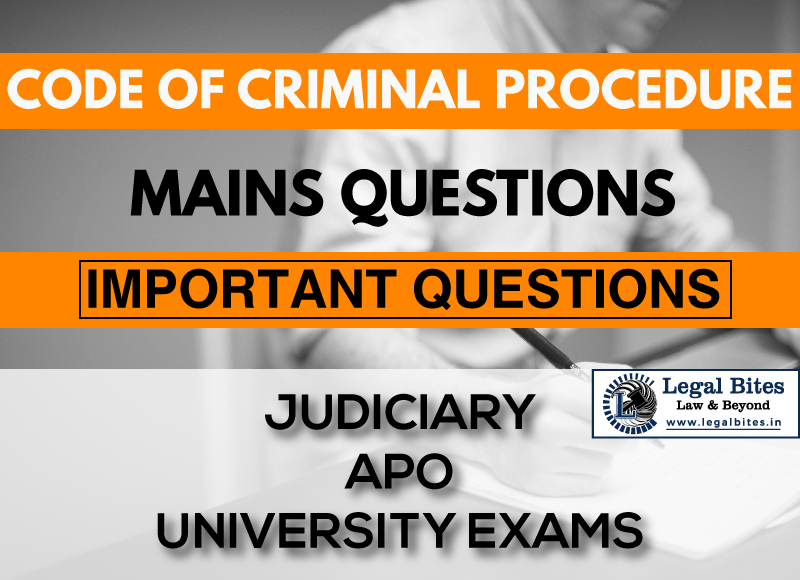'A' lodged First Information Report alleging that in the morning, he has hacked his aunt to death with an axe and the dead body was lying at his house… Examining the validity of this contention and the admissibility of the First Information Report as a substantive piece of evidence.
Question: ‘A’ lodged First Information Report alleging that in the morning, he has hacked his aunt to death with an ax and the dead body was lying at his house. The dead body and blood-stained axe were recovered therefrom by the police. ‘A’ is prosecuted for murder. There is no eyewitness or any other evidence against him. The… Read More »

Question: ‘A’ lodged First Information Report alleging that in the morning, he has hacked his aunt to death with an ax and the dead body was lying at his house. The dead body and blood-stained axe were recovered therefrom by the police. ‘A’ is prosecuted for murder. There is no eyewitness or any other evidence against him. The prosecution seeks A’s conviction for murder on the basis of his version contained in the First Information Report. Examining the validity...
Question: ‘A’ lodged First Information Report alleging that in the morning, he has hacked his aunt to death with an ax and the dead body was lying at his house. The dead body and blood-stained axe were recovered therefrom by the police. ‘A’ is prosecuted for murder.
There is no eyewitness or any other evidence against him. The prosecution seeks A’s conviction for murder on the basis of his version contained in the First Information Report. Examining the validity of this contention and the admissibility of the First Information Report as a substantive piece of evidence. Decide. [HR J.S. 1996]
Find the answer to the mains question only on Legal Bites.[‘A’ lodged First Information Report alleging that in the morning, he has hacked his aunt to death with an axe and the dead body was lying at his house… Examining the validity of this contention and the admissibility of the First Information Report as a substantive piece of evidence.]
Answer
First Information Report is not a substantive piece of evidence. In the case of Bable @ Gurdeep Singh v. State Of Chhattisgarh (on 10 July 2012) it was held that it is a settled proposition of law that the First Information Report by itself is not a substantive piece of evidence but it certainly is a relevant circumstance of the evidence produced by the Investigating Agency.
Once registration of the First Information Report is proved by the Police and the same is accepted on record by the Court and the prosecution establishes its case beyond reasonable doubt by other admissible, cogent and relevant evidence, it will be impermissible for the Court to ignore the evidentiary value of the First Information Report’.
FIR in the form of a confession
As per Sections 24, 25 and 26 of the Indian Evidence Act, the confessions given before are not admissible but a certain part of it can be made admissible like the discovery of any fact can be made admissible as per Section 27 IEA. Confession is an admission of incriminating facts against the accused.
It was held in Aghnoo Nagesia v. State Of Bihar [1966 SCR (1) 134] that ‘Section 27 partially lifts the ban imposed by Section 24, 25 and 26 of IEA in respect of so much of the information whether it amounts to a confession or not, as relates distinctly to the fact discovered in consequence of the information if the other conditions of the section are satisfied.
In the facts of the present case, the only principal evidence to prove his crime was the confessional First Information Report i.e. ‘A’ has made a confessional statement in his First Information Report in which he admits causing the death of her aunt with an axe and also told about the location of the dead body. Thereafter, the murder weapon i.e. the axe and body of the victim were discovered with the assistance of his confessional statement made in the FIR.
‘A’ cannot be punished solely on the basis of the contents of the First Information Report as it amounts to a confession made in the presence of a Police officer which is not admissible in evidence as per Section 25 IEA. The only use of this statement can be done to discover the axe and body of the victim but A’s conviction cannot be proved on the basis of this FIR.
Therefore an FIR is not a substantial piece of evidence, but the discovery of any fact made under that First Information Report is admissible.
Important Mains/Long Questions for Judiciary, APO & University Exams
- CRPC Mains Questions Series Part I: Important Questions
- CRPC Mains Questions Series Part II: Important Questions
- CRPC Mains Questions Series Part III: Important Questions
- CRPC Mains Questions Series Part IV: Important Questions
- CRPC Mains Questions Series Part V: Important Questions
- CRPC Mains Questions Series Part VI: Important Questions
- CRPC Mains Questions Series Part VII: Important Questions
- CRPC Mains Questions Series Part VIII: Important Questions
- CRPC Mains Questions Series Part IX: Important Questio
- CRPC Mains Questions Series Part X: Important Questions
- CRPC Mains Questions Series Part XI: Important Questions
Admin Legal Bites
Legal Bites Study Materials correspond to what is taught in law schools and what is tested in competitive exams. It pledges to offer a competitive advantage, prepare for tests, and save a lot of money.
